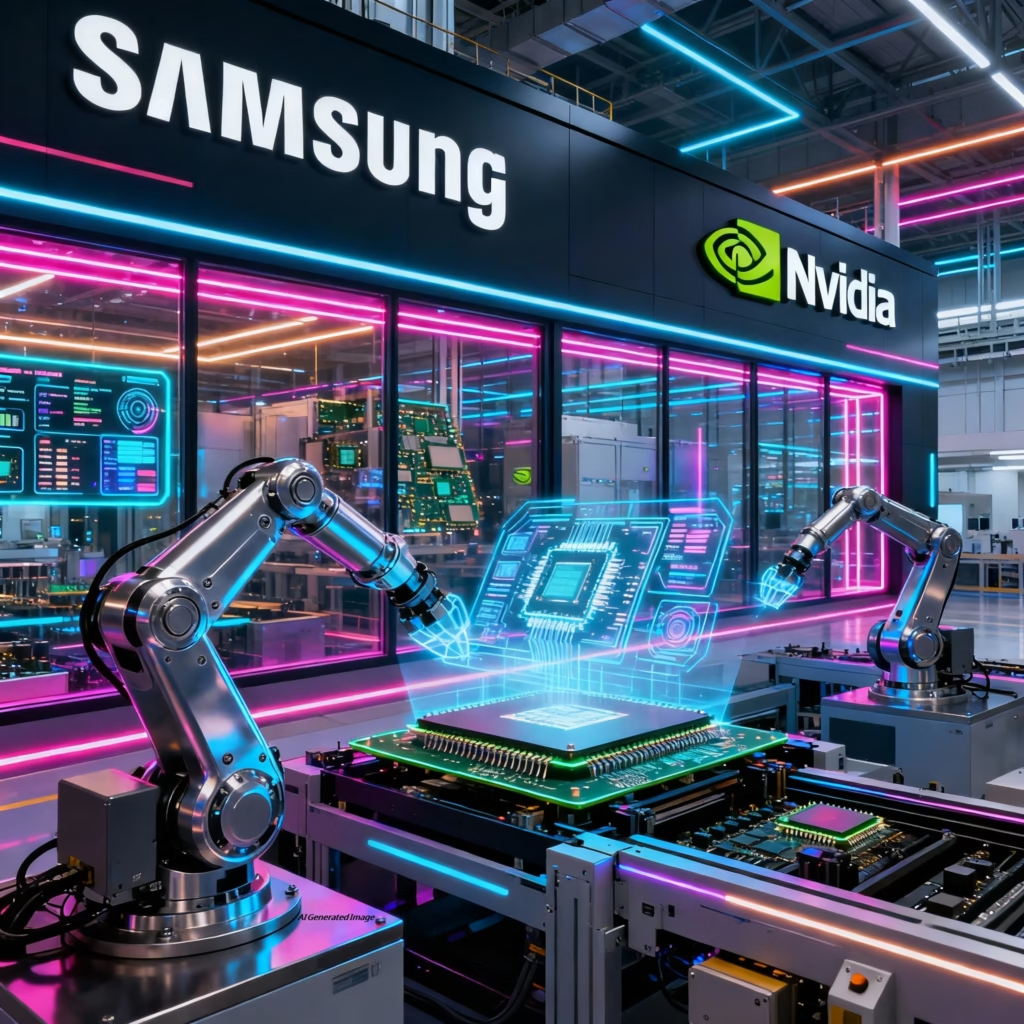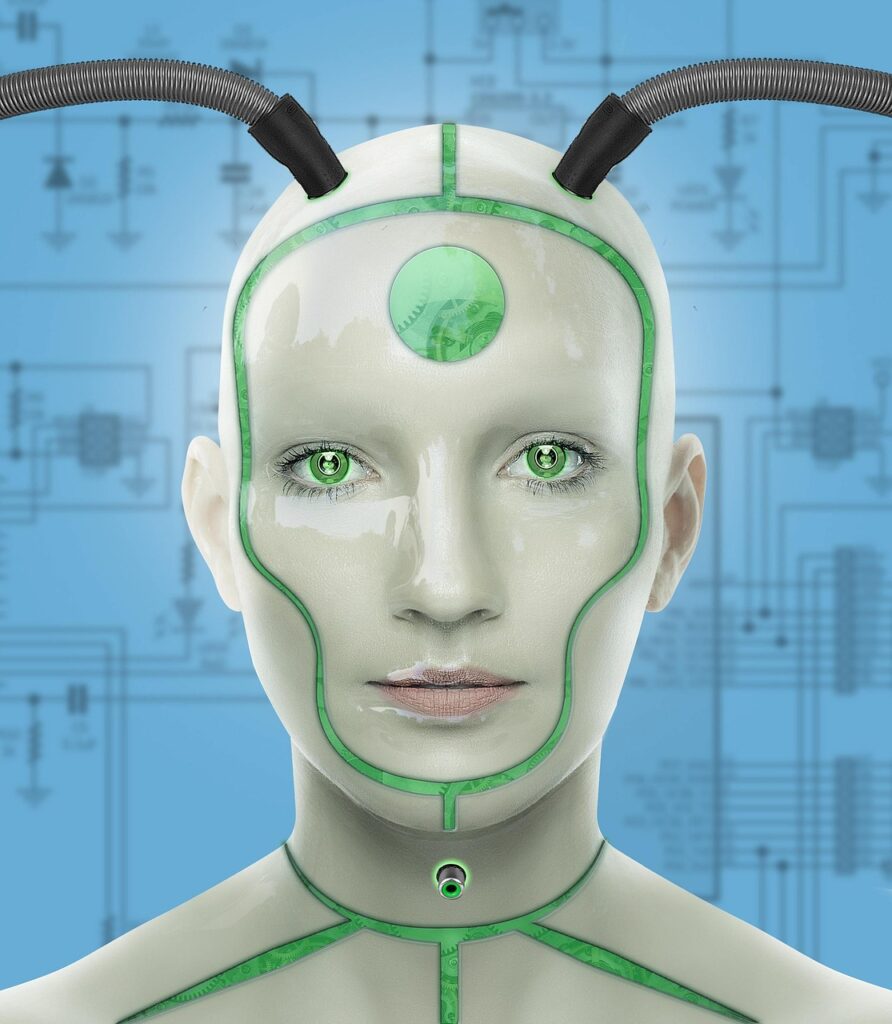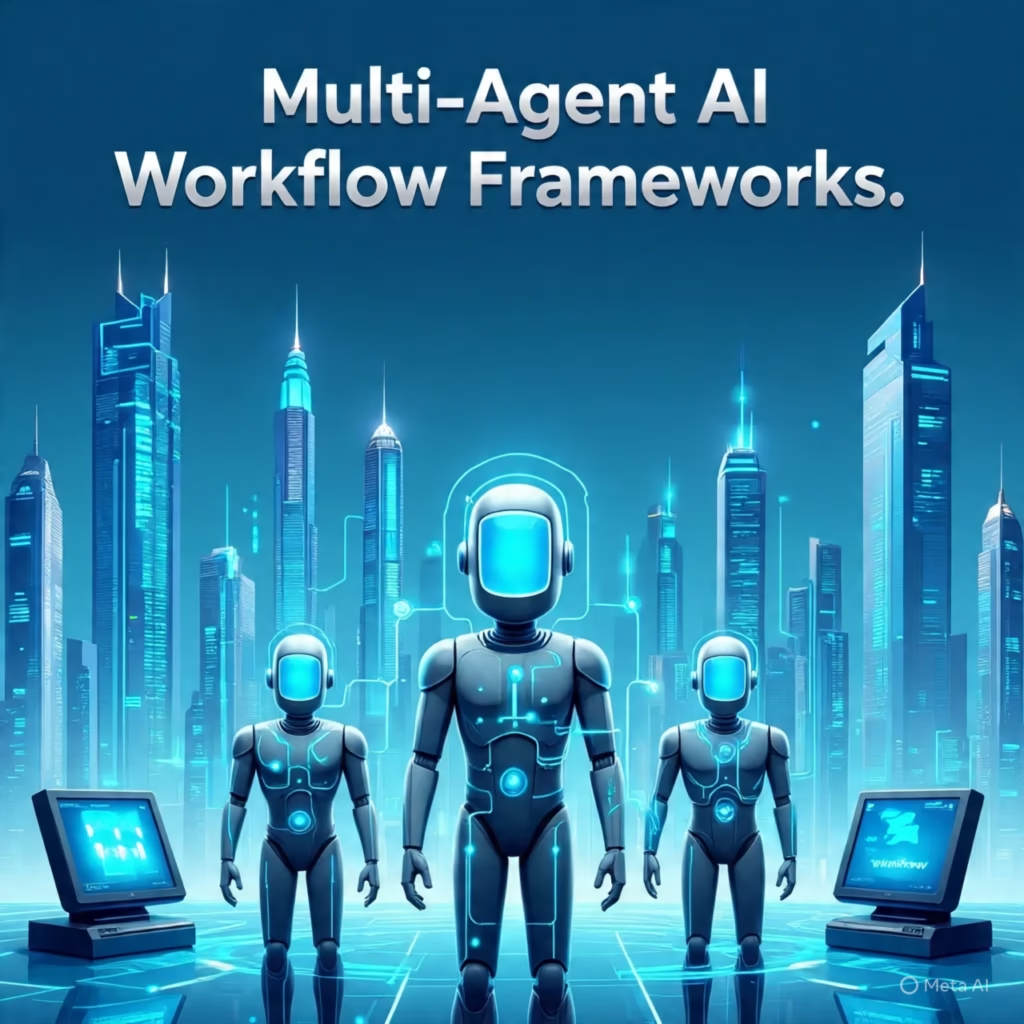How Samsung and Nvidia’s AI Megafactory Partnership is Reshaping Global Semiconductor Manufacturing
Picture a factory so advanced, it seems to think for itself an ecosystem of machines and algorithms working in harmony, fueled by some of the most sophisticated artificial intelligence ever developed. That vision is now within reach, thanks to the groundbreaking partnership between Samsung and Nvidia. Announced in October 2025, the Samsung-Nvidia AI Megafactory is more than just a technological milestone; it’s a testament to how AI is revolutionizing not only how chips are made but also the devices, businesses, and lives that depend on them every day. For consumers and industries worldwide, this collaboration signals faster innovation cycles, smarter products, and a future where technology becomes even more seamlessly integrated into our routines.
What is an AI Megafactory?
An AI megafactory uses a network of artificial intelligence solutions to integrate every phase of chip manufacturing from initial design and raw silicon processing to final quality assurance and logistics. Samsung’s upcoming facility will deploy over 50,000 Nvidia GPUs, forming an “intelligent manufacturing platform” that creates digital twins of entire chip fabs for real-time data analysis, predictive maintenance, and process optimization. With the ability to simulate, predict, and autonomously adjust to changing manufacturing conditions, the Samsung AI Megafactory marks a step beyond traditional automation toward true, continuous self-improvement.
Why Did Samsung and Nvidia Partner?
This alliance builds on a 25+ year collaboration, stretching back to when Samsung’s DRAM powered Nvidia’s earliest graphics cards. Now, as AI reshapes the semiconductor landscape, both leaders are merging their core strengths: Samsung’s prowess in memory, foundry, and next-gen memory (HBM4, GDDR, SOCAMM) with Nvidia’s dominance in AI processing, data center GPUs, and digital factory platforms like Omniverse. The megafactory leverages these synergies to push the boundaries of intelligent manufacturing and to address explosive global demand for AI-capable chips and electronics.
Explore Samsung’s corporate news. (Samsung Newsroom)
How Will AI Transform Semiconductor Manufacturing?
Artificial intelligence is set to transform every phase of chipmaking. AI-driven process controls mean smarter resource allocation, faster design cycles, and defect detection at speeds impossible for human engineers. Samsung’s deployment of the Nvidia Omniverse platform and Cuda-X libraries enables engineers to create virtual twins of real factories, optimizing processes and simulating upgrades before rolling them out in the real world. With tools like cuLitho, Samsung can achieve up to 20× faster computational lithography, maximizing yield and driving down costs.
Explore Nvidia Omniverse platform. (Nvidia official)
What Benefits Will the Megafactory Offer?
The megafactory’s AI backbone will deliver dramatic speed, efficiency, and quality improvements:
- Product development will accelerate, cutting the time from concept to silicon.
- Enhanced real-time data analytics will reduce costly errors and improve yields.
- Advanced robotics powered by Nvidia’s RTX Pro 6000 GPUs and Jetson Thor modules will handle tasks from material movement to precise assembly, boosting safety and scalability.
For example, Samsung’s pilot runs have shown profit increases of up to 80% as AI optimization slashes waste and energy use.
What Roles Do Nvidia GPUs and Omniverse Play?
Nvidia’s GPUs serve as the “brain” powering the megafactory’s intelligence. More than 50,000 GPUs will handle massive data processing workloads, enabling Samsung to deploy and train deep learning models across its entire production chain. Nvidia’s Omniverse software creates detailed digital twins, allowing virtual experiments and continuous real-time tweaking of process, layout, and maintenance routines paving the way for “zero-downtime” manufacturing.
How Will Robotics Be Influenced?
Nvidia GPUs will empower Samsung’s humanoid robots, enhancing vision, grasping, and autonomy in high-precision tasks. The Jetson Thor platform, designed for smart robotics, handles real-time inference for intelligent robots deployed on factory floors. By integrating edge AI, Samsung is laying the groundwork for a future where human-robot collaboration achieves new levels of efficiency and workplace safety.
See robotics in semiconductor fabs. (Global AI industry report).
Project Impact on Korea and Global Tech Supply Chains
The megafactory underscores South Korea’s ascendance as a global AI and semiconductor hub; Samsung is expanding its AI-driven infrastructure across all sites, including the new Taylor, Texas fabrication facility. Partnerships with SK Group, Hyundai, and Naver amplify this momentum, enabling Korean industries to lead in next-generation electronics, automation, and AI-powered mobility. Globally, the project will set new standards for supply chain agility, resilience, and transparency, offering lessons to manufacturers worldwide.
The Future of AI-Driven Chip Manufacturing
What’s exciting is the blueprint this megafactory offers for the future AI-designed chips produced in AI-managed fabs, with results feeding back to further optimize design and workflow. As more manufacturers adopt these innovations, smart factories could become the global standard, reshaping not just electronics but every industry dependent on advanced digital infrastructure like health tech, automotive, and energy.
Comparison with Other Global Initiatives
| Initiative | AI Chip Power | Key Feature | Region | Impact |
|---|---|---|---|---|
| Samsung-Nvidia Megafactory | 50,000 GPUs | Digital Twins, cuLitho, HBM4 | Korea, U.S. | End-to-end AI, record yield improvement |
| TSMC Smart Fab | 10,000 GPUs | Predictive Analytics | Taiwan | Process optimization, cost reduction |
| Intel IDM 2.0 | 7,000 GPUs | Edge AI, Advanced Packaging | U.S., Europe | Supply chain resilience |
Comparison based on available sources and announced capabilities
CEO Stock Sale: Signal or Strategy?
Recently, Nvidia CEO Jensen Huang made headlines by completing a pre-planned sale of over $1 billion in Nvidia shares. While some speculated about industry sentiment, analysts emphasized that the sale represented less than 1% of Huang’s holdings and coincided with Nvidia’s market cap surpassing $5 trillion amid unprecedented AI growth. Most interpret the move as prudent wealth management and a sign of sustained confidence in fact, Nvidia’s leadership remains deeply invested in its AI-driven trajectory, with new partnerships and breakthrough projects like the Samsung alliance leading the way.
Conclusion – Actionable Insights
The Samsung-Nvidia AI Megafactory stands as a landmark in the journey from traditional automation to truly intelligent manufacturing. For technologists, the message is clear: mastering AI platforms and robotics will be vital for career and business growth. For investors and industry leaders, partnerships like this rooted in decades of innovation signal that the next wave of value creation belongs to those who embrace AI at scale. For all readers, it’s an invitation to explore, learn, and participate in communities at the frontier of AI-driven manufacturing.
Keywords: AI megafactory, Samsung, Nvidia, semiconductor manufacturing, robotics automation, digital twins, artificial intelligence, advanced lithography, Omniverse, HBM4, SOCAMM, GPU optimization, supply chain transformation, intelligent manufacturing, Nvidia GPUs, AI chip production, AI-powered robotics, AI in manufacturing, tech innovation, semiconductor innovation, smart factories, AI manufacturing ecosystem
Disclaimer: Transparency is important to us! This blog post was generated with the help of an AI writing tool. Our team has carefully reviewed and fact-checked the content to ensure it meets our standards for accuracy and helpfulness. We believe in the power of AI to enhance content creation, but human oversight is essential.





